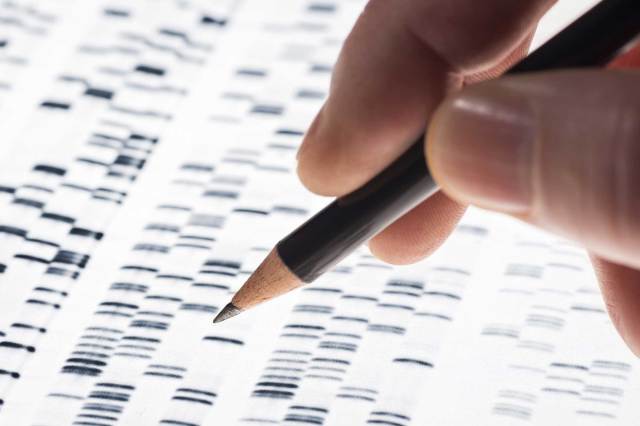
Have you heard of CRISPR? It is not in fact a dating app for smartly-dressed people. Rather, it’s a new method of genetic engineering.
Actually, ‘new’ is putting it mildly. CRISPR is downright revolutionary and, whether for good or ill, it will change our world – and, quite possibly, ourselves too.
As you might imagine, editing genes is quite fiddly. We’re now pretty good at reading genetic sequences, but rewriting them is a whole other business. But what if Mother Nature were to crack the problem for us?
Well, it turns out she has. Bacteria contain distinctive sequences called ‘clustered regularly interspaced short palindromic repeats’ or CRISPR for short. These CRISPR sequences mark out ‘spacer’ sequences of DNA originally acquired from bacteria-killing viruses called phages. The array of CRISPR and spacer sequences is then used to manufacture proteins which recognise and attack corresponding genetic sequences from invading phages.
Basically, the bacteria are using the CRISPR based system to ‘photograph’ the enemy’s DNA and then make little molecular robots that cut-up anything that matches the image.
By co-opting these mechanisms, genetic engineers have acquired an immensely more powerful toolkit than they had before (‘before’ being circa 2013). The biochemist Jennifer Doudna is one of the pioneers of this field and together with Samuel Sternberg she has written the definitive book on the subject so far – A Crack in Creation: Gene Editing and the Unthinkable Power to Control Evolution.
That’s quite a title, but – according to Matthew Cobb in the New York Review of Books – it doesn’t over-claim:
“The possibilities of CRISPR are immense. If you know a DNA sequence from a given organism, you can chop it up, delete it, and change it at will, much like what a word-processing program can do with texts. You can even use CRISPR to introduce additional control elements—for example to engineer a gene so that it is activated by light stimulation. In experimental organisms this can provide an extraordinary degree of control in studies of gene function…”
The implications are profound:
“In 2016, the power of gene editing and the relative ease of its application led James Clapper, President Obama’s director of national intelligence, to describe CRISPR as a weapon of mass destruction. Well-meaning biohackers are already selling kits over the Internet that enable anyone with high school biology to edit the genes of bacteria.”
On the other hand, our ability to ‘edit out’ genetic diseases will be greatly enhanced – indeed clinical trials are already underway. Eliminating defects is one thing, but what about making ‘improvements’?
“Like many scientists and the vast majority of the general public, Doudna remains hostile to changing the germline in an attempt to make humans smarter, more beautiful, or stronger, but she recognizes that it is extremely difficult to draw a line between remedial action and enhancement.”
The genetic basis of intelligence and other traits are highly complex. We’re not even close to full explanation for how it works – and thus, even with CRISPR, our ability to meddle is, for the moment, limited.
However, other new abilities will be within our grasp much sooner. A particularly dangerous example is ‘gene drive’ – a natural or artificial modification that enhances the transmission of particular genes through sexual reproduction:
“When a gene drive is used, the frequency of the altered gene increases exponentially with each generation, rapidly flooding the whole population… The problem with a gene drive is that it is essentially a biological bomb…”
CRISPR makes it much easier to make these biological bombs – which we can then use to biologically nuke species that we don’t like (especially fast-breeding pest species).
Even without a direct IQ boost from CRISPR, we already have the intelligence we need to reshape the biosphere. Whether we have the necessary wisdom is another matter.
> CRISPR was one of the five big tech stories identified by Nigel Cameron in his article on how the media’s obsession with Trump is burying coverage of other important news stories.










Join the discussion
Join like minded readers that support our journalism by becoming a paid subscriber
To join the discussion in the comments, become a paid subscriber.
Join like minded readers that support our journalism, read unlimited articles and enjoy other subscriber-only benefits.
Subscribe